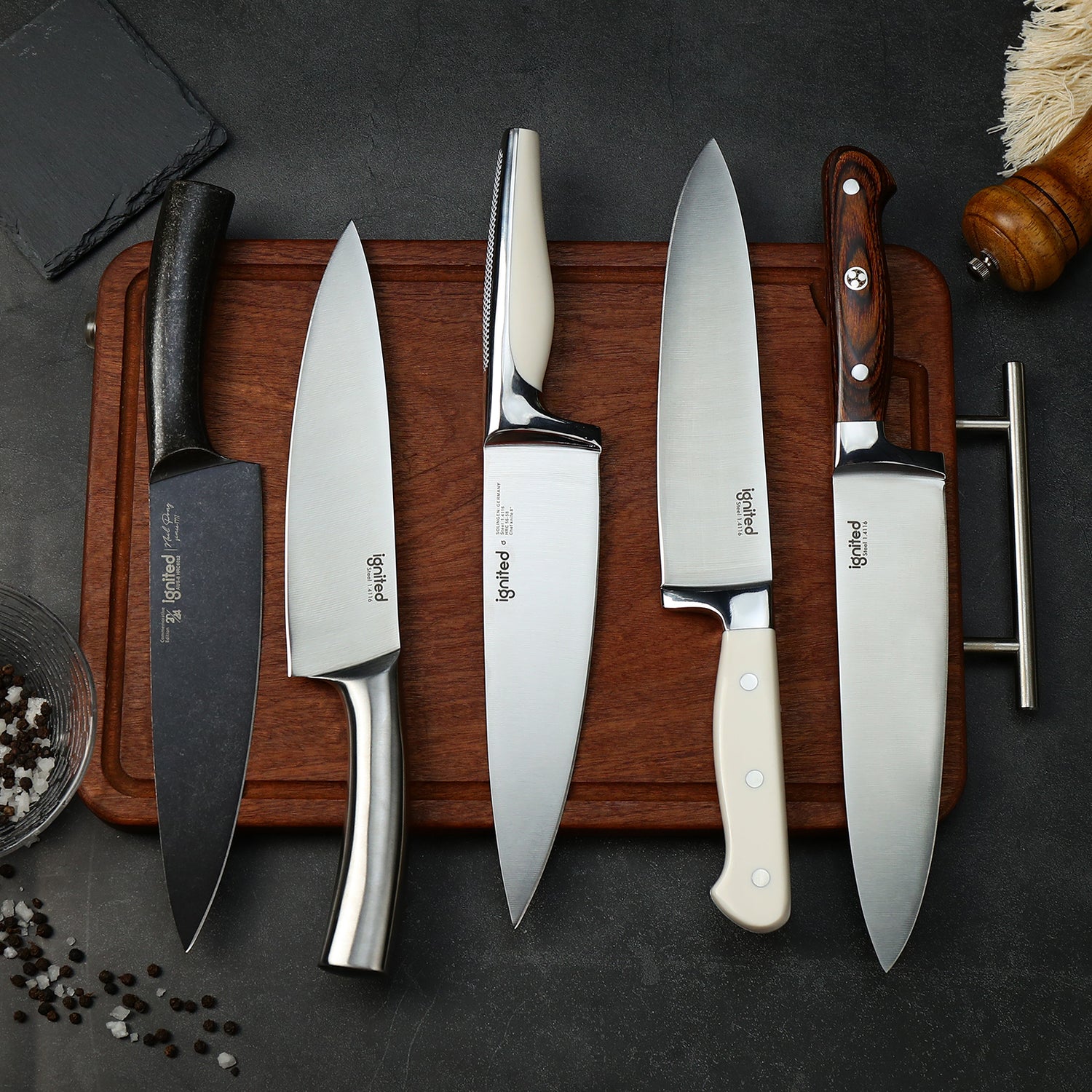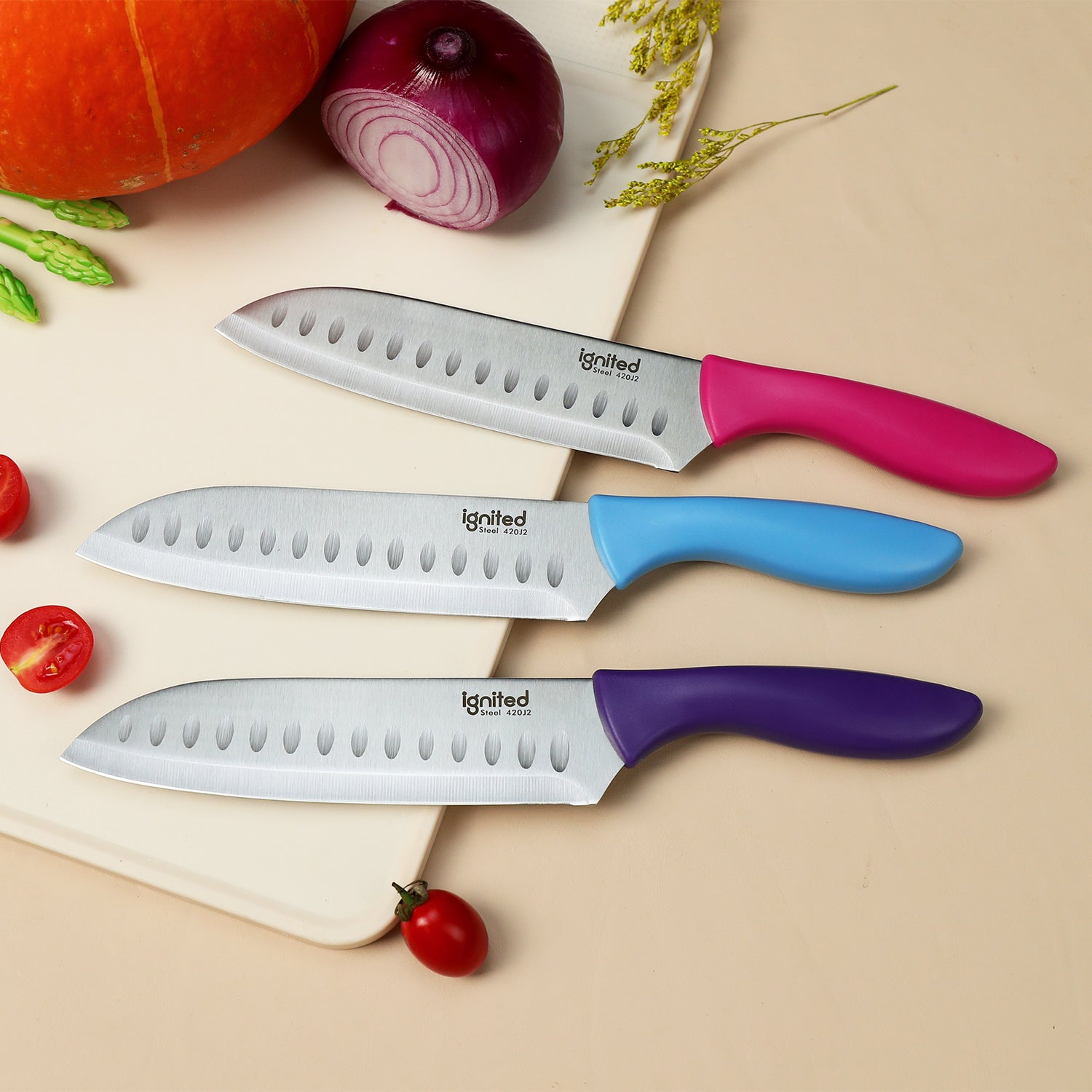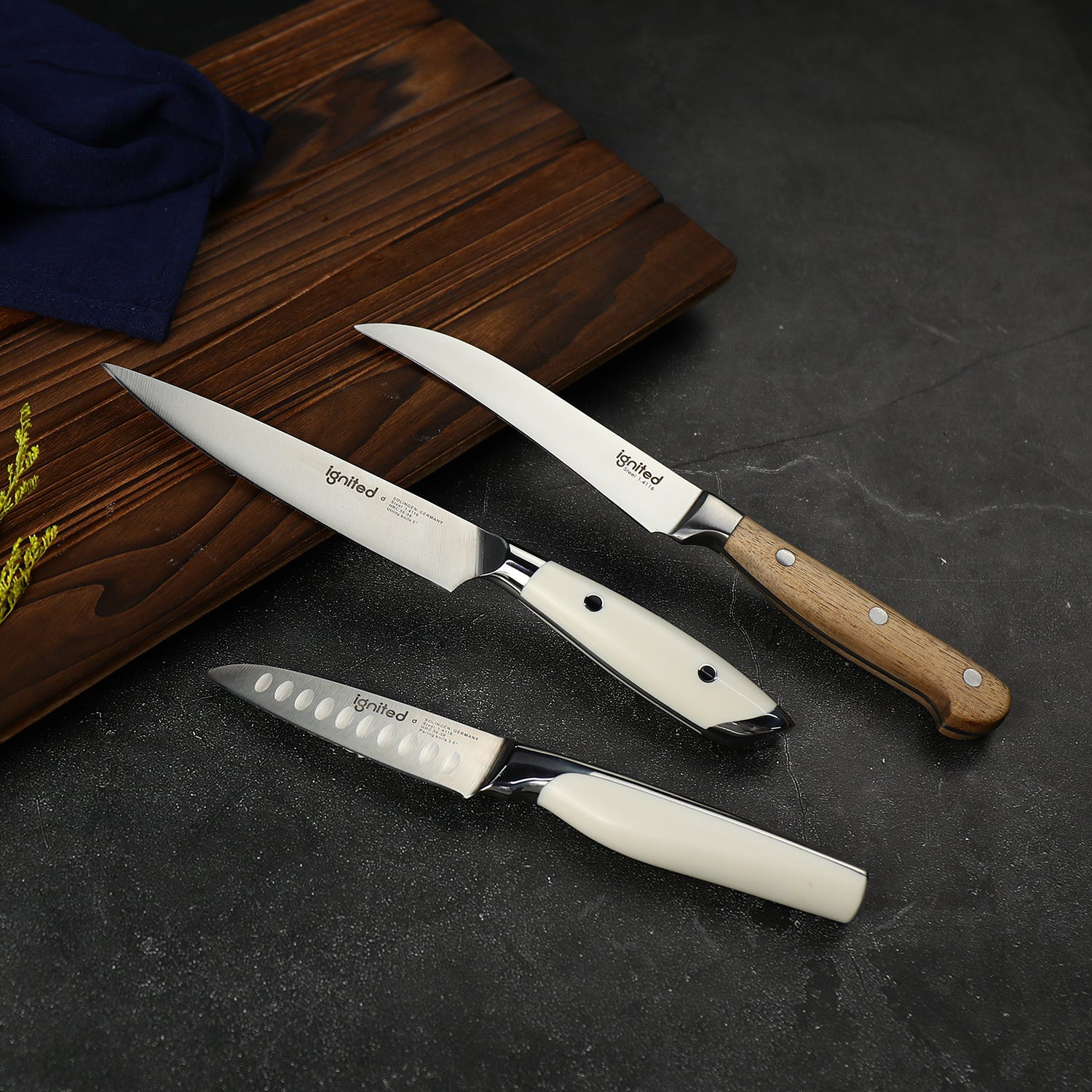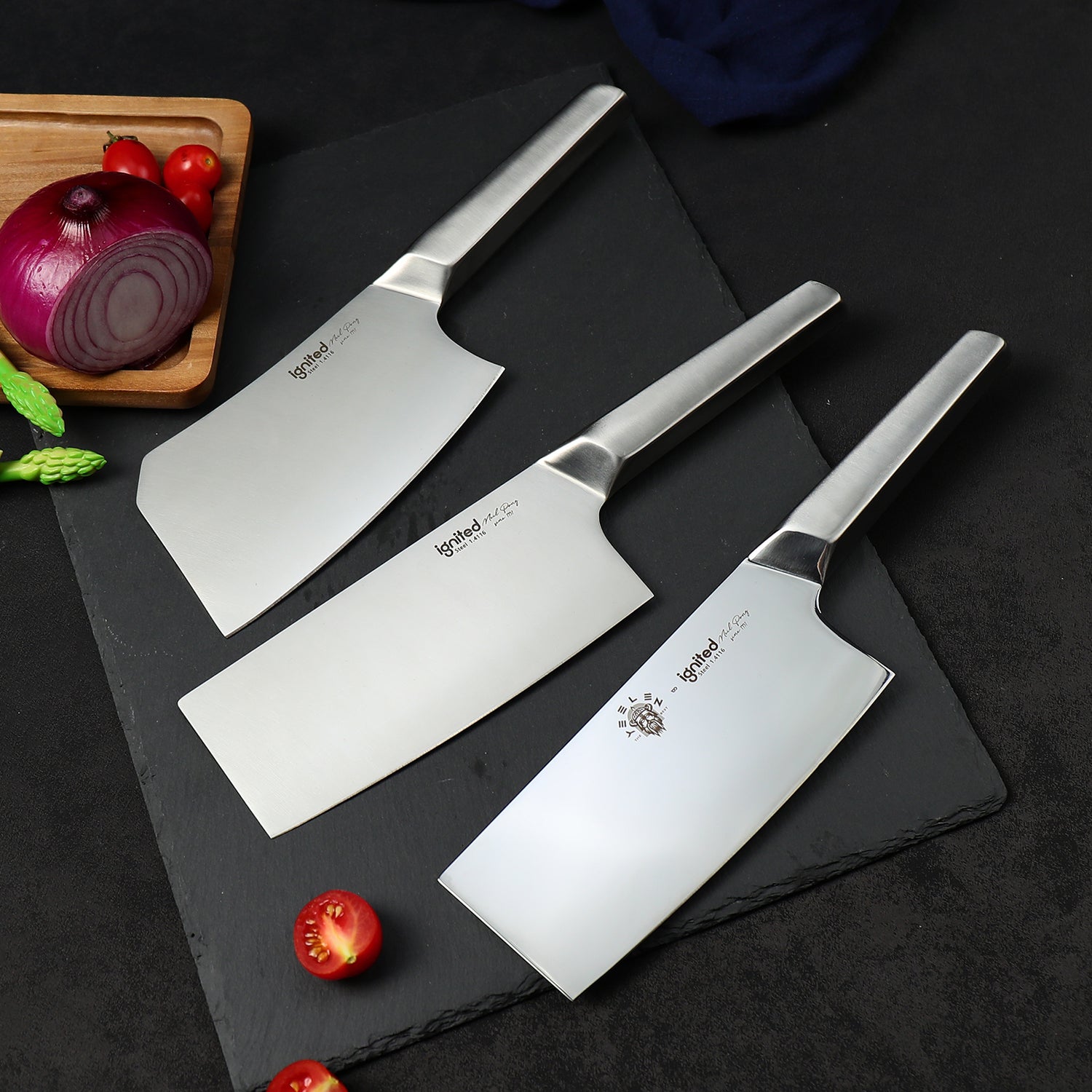What Is Rockwell Hardness?
Rockwell Hardness is a standardized scale used to measure the hardness of metals, including knife blades. For kitchen knives, the Rockwell Hardness C scale (HRC) is most commonly used. It indicates how resistant a knife’s steel is to indentation, which correlates with its strength, wear resistance, and ability to retain a sharp edge.
The test involves pressing a steel ball or diamond cone into the surface of the material under controlled pressure and measuring the depth of penetration. The result is expressed in HRC (Hardness Rockwell C) units.
Typical HRC Ranges for Kitchen Knives
| HRC Value | Hardness Level | Typical Use Case |
|---|---|---|
| 52–54 | Soft | Budget knives, easy to sharpen |
| 55–57 | Medium | German-style knives, durable & tough |
| 58–60 | Hard | High-quality Western & Japanese knives |
| 61–63 | Very Hard | Premium Japanese blades, razor-sharp |
| 64+ | Ultra-Hard | Specialty knives, prone to chipping |
Why Rockwell Hardness Matters in Kitchen Knives
1. Edge Retention
Higher HRC usually means better edge retention. Harder blades (60+) can hold a razor-sharp edge longer, ideal for precise slicing tasks. However, they’re also more brittle.
2. Durability and Toughness
Softer blades (around 55 HRC) are more durable and resistant to chipping. This is why many Western-style knives favor this range, especially for heavy-duty cutting or bone contact.
3. Ease of Sharpening
Lower HRC knives are easier to sharpen at home. Extremely hard knives require special whetstones or professional sharpening.
German vs. Japanese Knife Hardness
German-style knives (e.g., made of 1.4116 stainless steel) typically have an HRC of 55–57, prioritizing durability and resilience.
Japanese-style knives (e.g., made of VG-10, AUS-10, or Blue Steel) often reach 60–62 HRC, aiming for maximum sharpness and edge precision.
How to Choose the Right HRC for You
| If You Want... | Look For HRC | Reason |
|---|---|---|
| Easy sharpening | 52–56 | Softer steel resharpens quickly |
| General home cooking | 56–58 | Good balance of toughness and sharpness |
| Precise slicing & fine cuts | 59–62 | Holds edge longer for detailed work |
| Ultra-sharp edge | 61+ | Best for professionals or enthusiasts |
Bonus Tip: Care Based on Hardness
- High HRC knives are prone to chipping—avoid hard bones or frozen foods.
- Always hand-wash and dry your knife regardless of hardness to avoid corrosion.
- Use proper cutting boards (wood or plastic, not glass or stone) to maintain edge life.
Conclusion
Rockwell Hardness is more than just a number—it's a key factor that defines how a knife performs in the kitchen. Understanding the right hardness level helps you select a blade that matches your cooking style, maintenance habits, and performance expectations.
Whether you're choosing a tough German-style knife or a razor-sharp Japanese blade, knowing the HRC puts you one step closer to finding your perfect kitchen companion.




